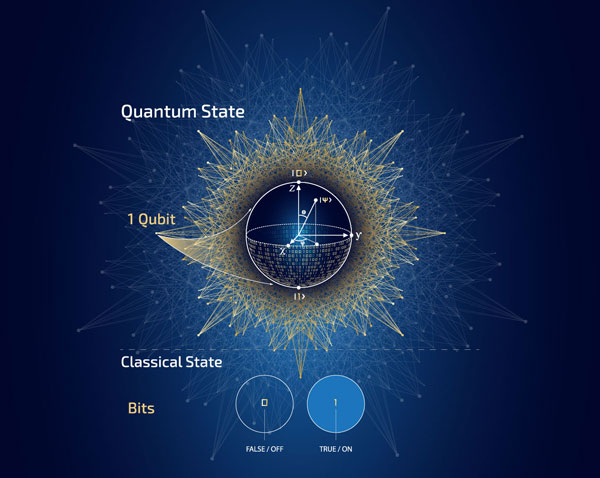Research alliance to advance quantum computing for breakthrough science
The Quantum Information Edge, a nationwide alliance of national laboratories and universities, has launched to maintain U.S. leadership in next-generation information technology and advance the frontiers of quantum computing systems, which have the potential to make calculations that are far beyond the reach of today’s computers.
The solutions could transform how humans design technology that addresses national and global scientific and engineering challenges, from solar cells to new materials, pharmaceuticals and agricultural fertilizers, and could probe the mysteries of physics and the universe.
Co-led by Sandia and Lawrence Berkeley national laboratories, the Quantum Information Edge strategic alliance brings together expertise in computer science, materials science, physics, mathematics and engineering to pioneer practical advances in quantum systems.
The DOE national laboratories are joined by experts from the University of Maryland; Harvard University; California Institute of Technology; University of California, Berkeley; University of Colorado, Boulder; Massachusetts Institute of Technology; MIT Lincoln Laboratory and the University of New Mexico.
“Through collaboration and innovation focused on tangible technology demonstrations, the Quantum Information Edge will amplify the return-on-investment of quantum research within the U.S. by accelerating progress toward achieving practical quantum computing systems,” said Scott Collis, director of computing research at Sandia.

Accelerating quantum R&D
Irfan Siddiqi, director of Berkeley Lab’s Advanced Quantum Testbed and a faculty scientist in the lab’s computational research and materials sciences divisions, said, “We are at the threshold of significant advances in quantum information science. To break new ground, the Quantum Information Edge will accelerate quantum R&D by simultaneously pursuing solutions across a broad range of technology areas and integrating these efforts to build working quantum computing systems that benefit the nation and science.”
The alliance will identify the most significant science applications that stand to benefit from quantum computing, engineer the hardware and software to run these applications and develop methods to verify that the applications have achieved quantum advantage — meaning they can solve problems faster than classical computers.
“If we imagine a world with ubiquitous access to quantum computing, what types of problems could we solve, and could we obtain solutions faster or otherwise better than with classical computing alone? We are developing theory and algorithms to address such questions,” said Sandia computer scientist Ojas Parekh.
The alliance will advance quantum processors using several hardware approaches, including superconducting, trapped ion and trapped atom quantum bits (or qubits). The alliance will explore how to suppress noise and errors, which severely degrade computing performance, in multi-qubit quantum processors, and will develop new computing algorithms to control qubits and engineer new techniques to fabricate them. Theoretical computer scientists, physicists and chemists will help understand how best to apply these systems to important scientific problems.
The team will also help grow the workforce needed to keep the nation at the forefront of quantum information science for years to come, share its advances with the broader scientific community to drive the innovation ecosystem and work with industry to translate promising technologies into real-world applications.
“Among the applications that are important are accurate simulations of molecules and materials, which are central to many aspects of Sandia’s national security mission. Sandia has also developed working qubits in multiple technologies, and we believe it will be critical moving forward to couple knowledge of important applications with an understanding of how quantum devices work and can improve,” said Rick Muller, senior manager for Sandia’s quantum information science programs.